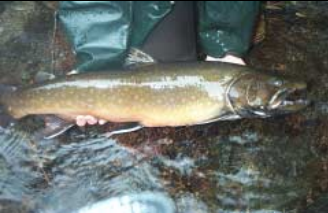Upper Willamette Bull Trout Research

Populations of bull trout Salvelinus confluentus have declined markedly over the last century as a consequence of habitat alteration, introduction of non-native species, overharvest, and eradication efforts. Accordingly, the U. S. Fish and Wildlife Service listed bull trout as threatened in the coterminous United States under the Endangered Species Act in 1999 (63 FR 31647). In the Willamette River basin, bull trout were extirpated from the Clackamas, Santiam, and Middle Fork Willamette drainages by the late 1900s, while extant populations in the McKenzie drainage were assessed “Of Special Concern” to “High Risk” in the 1990s (Buchanan et al. 1997). To address this situation, resource management agencies have conducted research and monitoring of bull trout populations in the upper Willamette basin and have attempted to improve the status of the species through habitat modifications (e.g., large wood and gravel augmentation, modified dam operations), reintroduction of bull trout to formerly occupied sites, and reduction of incidental angling mortality and poaching.